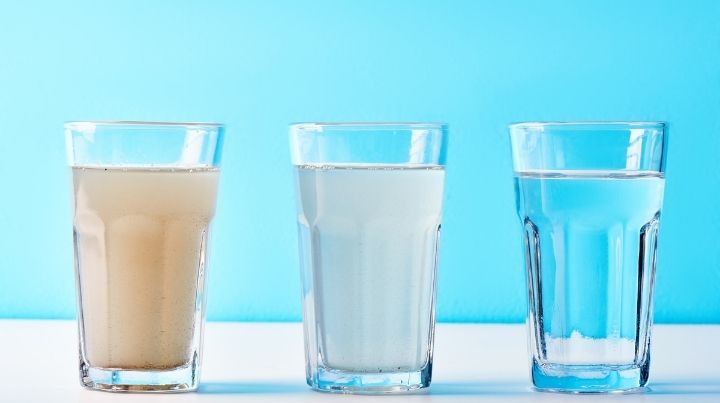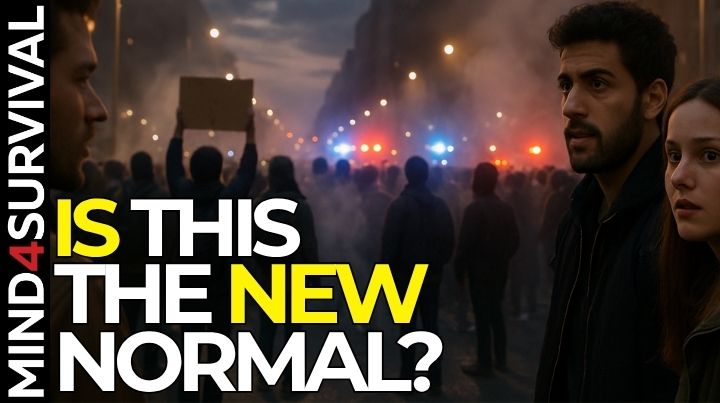How to Purify Water for Drinking

Do you know how to purify water for drinking?
Having enough fresh, pure water to meet our daily consumption needs is a part of everyday life. Unfortunately, most of us tend to take it for granted until the worst happens. Ideally, you have an available store of clean water on hand when a disaster occurs. However, what happens when the emergency lasts longer than you planned for and your water runs out? If you don’t have a plan to acquire water. And then, once you've found it, you need to know how to purify water for drinking.
Here is a rundown of how to purify water for drinking. We'll talk about what you need, why it's necessary, and the five best ways to make your water drinkable in the event of a disaster. If you'd like a more in-depth dive into water for survival, The Prepper's Water Survival Guide is a great resource.
Why Do We Need to Know How to Purify Water for Drinking?
According to the Centers for Disease Control and Prevention (CDC), there are four primary categories of pathogens that water purification attempts to eliminate:
- Protozoa: Cryptosporidium
- Parasites: Giardia
- Bacteria: E. coli, Legionella, Shigella, Campylobacter, Salmonella, etc.
- Viruses: Norovirus, etc.
The greatest problem protozoa, parasites, bacteria, and viruses (PPBV) cause is severe gastrointestinal issues. If these issues are bad enough, they can lead to extreme dehydration. Dehydration, when one already lacks a readily available source of drinking water, can lead to severe problems, including death.
This is why pure, clean, potable water is crucial to survival. When we discuss different purification methods, it's important to understand the effectiveness of each one in killing PPBVs. When you understand each option's effectiveness, you will be better prepared should you need to purify water.
Distillation
Next to bottled water, distilled water is regarded to be the safest to drink. The distillation process involves heating water to its boiling point (212-degrees Fahrenheit) for at least one minute. Then heat it to the point where the liquid water turns to gas and passes through a tube, where it is cooled back to a liquid. Because PPBV’s don't evaporate with water, the process of changing water into gas, then again back into water in another chamber, leaves any possible contaminants behind.
Distilling water is considered to all but eliminates possible impurities, including PPBV’s. While it is an excellent option for water purification, the equipment needed to distill water isn't practical or efficient in many disaster situations. Not only that, it requires a lot more water and a lot more fuel. Therefore, distillation may not be a reliable source of water purification if you are without power or if the situation forces you to leave your home.
However, if you have electrical power and are not forced to leave your home, distilling equipment may provide you with a solution to your water needs. As long as you can find sources of water, you should be able to purify it and keep the water flowing.
Here is a selection of water distillers on Amazon.
Boiling
If you have a heat source but no way to distill your water, boiling is the next best option. The CDC states that bringing water to a rolling boil for at least one minute will kill most PPBV’s and can be done without electricity, making it a more reliable way to purify water. If you are at higher altitudes, the boiling point of water is lower. If you are at an altitude of 5000 feet or higher, the EPA recommends a rolling boil of at least 3 minutes for water purification.
Additionally, you’ll be set if you have a dependable cook kit with the ability to boil water. If you choose to use boiling as your water purification option, you won’t have to use the space in your pack with additional gear.
Note that while boiling water gets rid of impurities, it doesn't eliminate debris or chunks. You may wish to run your water through a simple filter (like a clean cloth or coffee filter) before boiling it to eliminate any sediment or other detritus.
If you are dealing with chemical contamination, boiling may not be the best method for purifying water. If your water becomes contaminated with fuel or toxic chemicals, boiling it may intensify the impurity's negative effects.
Filtration
If you don't have distilling equipment or a heat source, there are still ways to purify water so that it's safe to drink. One of the most common ways is by adding a portable water filter to your kit. While filters may operate differently, the theory behind them is the same. Simply put, you run water into the filter where it passes through a ceramic or carbon element, similar to a standard Brita filter you may have at home. After the water exits the filter, you can store it for future use.
According to the CDC, water filtration has varied effectiveness as a water purification method. For example, while filtration is highly effective in killing protozoa and parasites, it is only moderately effective in killing bacteria and not useful in eliminating viruses. Regardless, filtering water is a better option than drinking straight from a contaminated water source.
Do some research to determine what type of impurities you're most likely to be dealing with. The Sawyer Mini and Lifestraw are both very high-quality personal survival filters.
Here are some portable water filters on Amazon that have better reviews.
Chemical Treatment
When deciding how to purify water for drinking, consider the following chemicals.
- Iodine or Chlorine: Hikers often carry iodine tablets on long trips in case their water supply doesn't last, and they are suitable for emergencies in your survival pack. Chlorine bleach (household bleach) also works in a pinch. Here is the EPA's guidance about how much bleach is optimal to disinfect water.
- Chlorine Dioxide: Many people favor chlorine dioxide as an option to purify water in place of iodine tablets. Unfortunately, it leaves an unpleasant taste in the treated water. However, you can mask the bad taste of chlorine dioxide with drink mixes such as Crystal Light, making it an option worth considering.
The CDC claims that the chemical treatment methods of disinfecting water have varying rates of effectiveness.
For example, disinfecting with iodine or chlorine is not effective in killing either protozoa or parasites. However, it is highly effective in killing bacteria and viruses. On the other hand, chlorine dioxide treatment is low to moderately effective in killing Cryptosporidium. Fortunately, though, it is highly effective in killing other protozoa, bacteria, and viruses. More specifically, it can kill viruses, bacteria, and Giardia in about 30 minutes, with a recommendation to wait four hours before drinking the treated water to eliminate Cryptosporidium.
Like boiling water, you will want to use a simple filtration method to get rid of any sediment.
Water Pasteurization
In an emergency, you can pasteurize water to make it safer (but not entirely safe) to consume. This process is commonly seen with beverages like dairy milk and juices. As opposed to boiling, pasteurization heats these liquids to 160 degrees F (over 50 degrees lower than boiling). This method, heating water to 160 degrees F for six minutes, may significantly lower the risk of water-borne illness without requiring much equipment.
You can also pasteurize water with potentially no fuel except the sun. This is because pasteurizing happens at a temperature low enough to allow sunlight as an energy source. There are solar pasteurization setups available online that can be a handy option when nothing else is available.
The Bottom Line on How to Purify Water for Drinking
As preppers, we believe in always being as ready as possible for anything. So, knowing how to purify water using multiple methods should be a preparedness priority. At their worst, any of these options are better than drinking untreated water. However, to put the odds in your favor, if distillation or boiling isn't an option, mixing chemical treatment with manual filtration is better than only using one method or the other.
In the end, the bottom line is to do your best to ensure your and your family's safety. This includes planning for safe drinking water.
What are your favorite methods of water purification? Do you have any questions about how to purify water for drinking? Leave a comment below.
Additional Resources:
Stay safe,

Related Articles
FREE Guide
Read the Best Seller
Join Mind4Survival
Stay informed by joining the Mind4Survival! 100% Secure! 0% Spam!
Affiliate Disclosure...
Mind4Survival is a free, reader-supported information resource. If you make a purchase through our link, we may, at no cost to you, receive an affiliate commission.
Do You Want To Be Ready No Matter What?

Download our free 39-page guide with interactive, 7-Day Emergency Kit Checklist and take the first step toward real preparedness.
- Know exactly where to start.
- Save time and money.
- How-to build a complete Basic Emergency Kit.
- Level up your safety and security.
Join Mind4Survival
Stay informed by joining the Mind4Survival! 100% Secure! 0% Spam!





